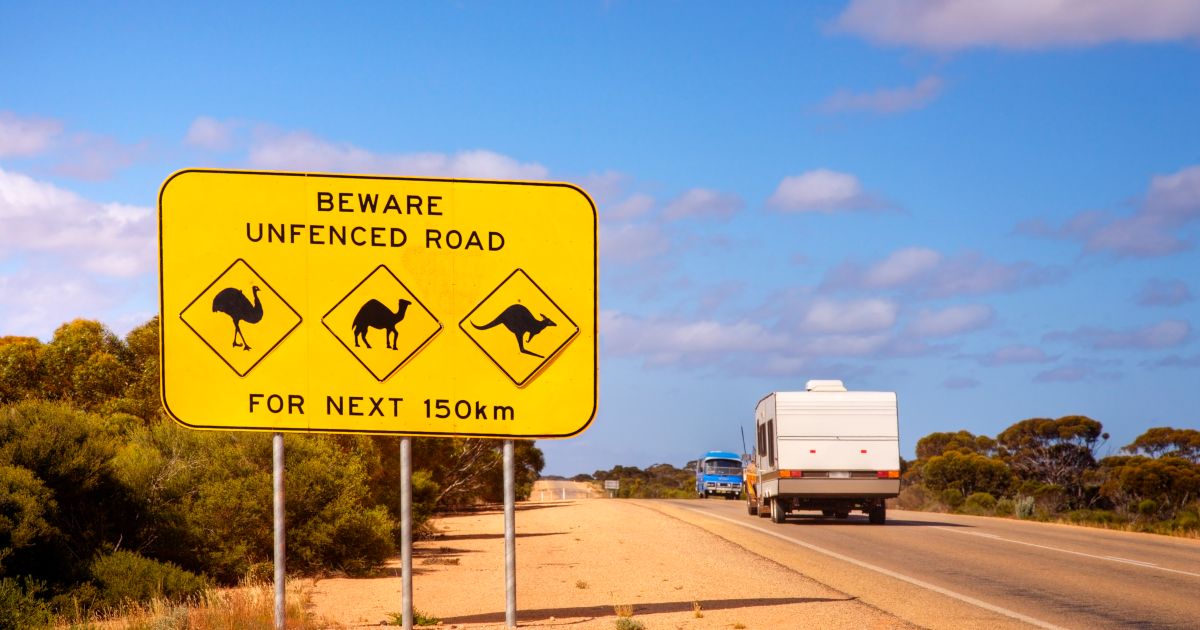
For caravanning devotees and long-distance travellers, an ultra-high frequency citizen band (UHF CB) radio is an essential device. This is especially true if you go beyond the wilderness and bushland, and get all the way to the remote Australian outback where cell phone reception is weak to totally non-existent.
With a UHF CB radio, caravan owners and travellers can venture far and explore vast expanses of the outback without worrying about communication problems. If you do happen to run into any trouble (e.g. your vehicle breaks down or you get lost), you can use your trusty UHF CB radio to get help or access emergency services.
UHF CB radios are also quite affordable, with a basic option starting as low as $50. With so many benefits at such a low cost, we recommend adding it to your family camping checklist and packing it along with your other road trip essentials.
Of course, no one’s stopping you from buying a fancier one with a bigger antenna and better reception. But after the initial thrill of procuring your own UHF CB radio and practising your Alpha-Bravo-Charlie (phonetic alphabet) mastery and a couple of pretend 10-4s, what happens next?
If you’re planning to go on a grand tour of the outback or to explore the bushland, this handy guide to Australian UHF channels will guide you through using your radio on the right channels.
UHF CB is a class-licensed citizen band two-way radio service using the 476.4250–477.4125MHz radiofrequency intended for short-distance communications. The UHF CB band radio service is available for public access and is authorised by the governments of Australia, New Zealand, Vanuatu and Malaysia.
UHF CB provides 77 UHF radio channels, including 32 channels (16 output and 16 input) assigned to repeater stations.
Although the service is technically available to everyone, not all CB radio channels are allowed for use by just anyone for whatever reason. In fact, the penalties can be pretty stiff for anyone caught misusing certain UHF radio channels.
For example, people can face imprisonment or a hefty fine for the general misuse of the legally allocated UHF emergency channel, or a few hundred dollars for minor cases.
Therefore, it helps to know about CB radio channels in general, as well as legally restricted channels and proper UHF CB radio etiquette.
Below is information from the Australian UHF channel chart you can refer to so you know which channel you should leave your CB radio on by default for general use:
If you need to contact another camper or caravan owner, or a truck or 4WD driver, you can switch to the above channels (18, 10 and 40) as these are all shared channels and accessible to everyone.
That being said, there are other CB radio channels you can switch to for specific public information.
The channels below are legislated as a part of the Australian Communications and Media Authority (ACMA) UHF CB Class Licence. Any misuse or abuse of these channels is subject to penalties.
The sophisticated technology available today makes it easy to triangulate the location of any UHF radio user found to be abusing or misusing these channels. Therefore, it makes sense to stay off these frequencies - especially cb emergency channels when not in an emergency.
Using a UHF CB radio can be fun and exciting. However, just as there is caravan park etiquette to be observed, there are also rules to follow to ensure the trouble-free use of your radio.
When using a CB radio, remember:
There may be instances when you encounter trolls and new users who don’t know yet how to behave. In such cases, just avoid trolls (which are rare) and politely inform newbies how to use a UHF radio respectfully and educate them about radio etiquette, so they know better.
The UHF CB radio offers an enjoyable and unique way of staying connected with your friends, camping group or convoy. More importantly, it is an essential communication device you can use during emergencies.
So, to get the best use out of your UHF CB radio, consider the information and tips shared above next time you are out exploring Western Australia.
What does UHF stand for?
The term UHF stands for Ultra-High Frequency citizen band radio. The UHF is in the range of 300 megahertz and 3 gigahertz and is commonly used to communicate between cars via radio when travelling remotely.
What is a UHF channel?
UHF channels are a class-licensed citizen band two-way radio for short-distance communications. UHF radios are used for land mobile communications, such as public safety, business, industry, transportation, and agriculture.
What UHF channels can I use in Australia?
For general use, channel 18 is for caravan owners/campers, channel 10 is for 4WD clubs or convoys, and channel 40 is for truck/oversized vehicle drivers.
Most of the other channels are for specific emergencies and official communications. So, make sure to check their primary usage first.